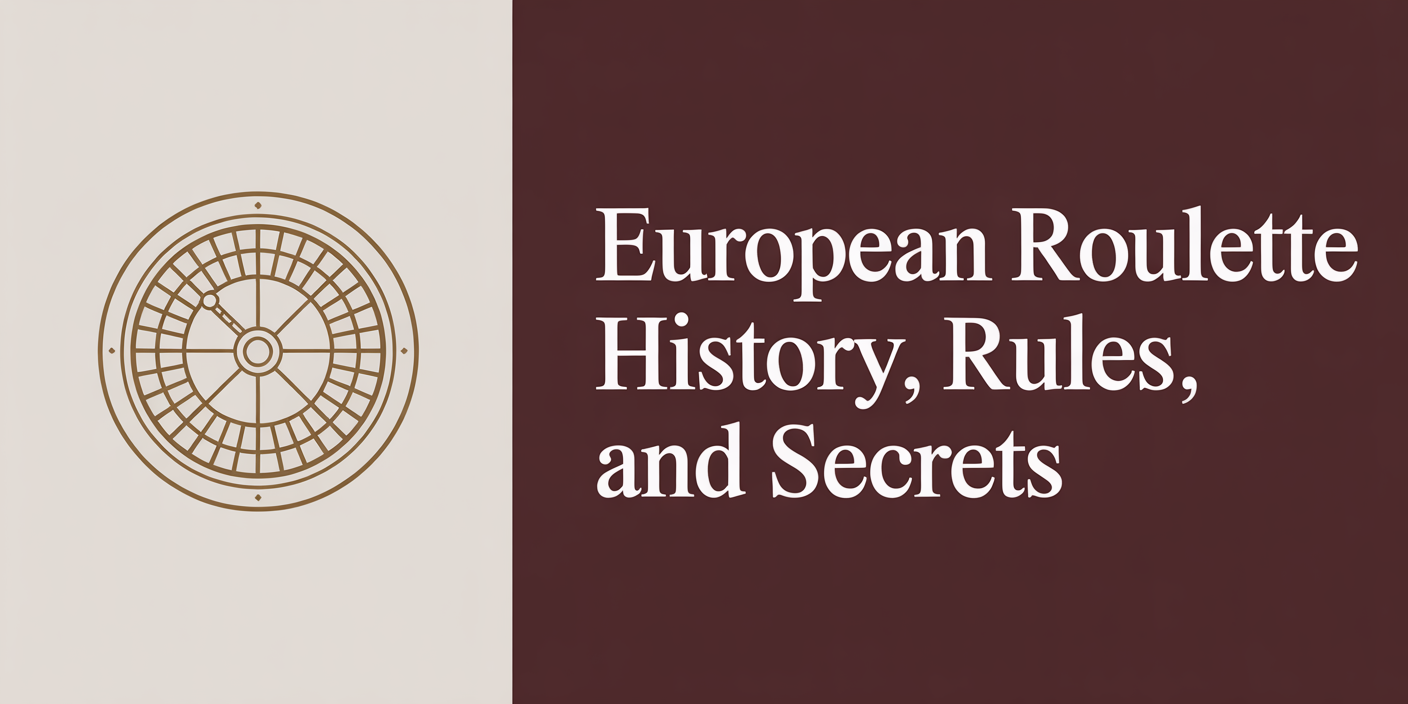European Roulette: History, Rules, and Secrets

All legit casinos offer a roulette game. Roulette is the classic symbol of the gambling world for most gamblers. Its symbol of a rotating wheel and its exciting gameplay have made it a staple at both land-based and online gaming platforms. Now, fans of this old classic can play it in most establishments worldwide, including great european roulette casinos USA, which offer a true gaming experience for US gamblers.
The attraction of European roulette lies largely in its elegant appearance and intriguing history.
The History of European Roulette
According to the most prevalent hypothesis among gambling historians, the ancestor of modern roulette was a primitive game called hoca. It shares many similarities with the game as played today:
- Circular foundation with numbered pockets;
- Ball that drops into one of the pockets randomly;
- Multiple "Zero" regions that consolidate all the wagers to the house.
Historical accounts show that variations of this game were popular in Austria, Hungary, France, and other countries in Europe. It was popularized by the famous French cardinal Mazarin. During his time, many gambling houses were established, and their funds overflowed both the French treasury and the pocket of Mazarin himself.
European roulette assumed its recognizable form by the late 18th century, and by the mid-19th century, the rules of European roulette had been completely set and standardized.
European Roulette Description and Rules
Roulette is a straightforward and trustworthy game — evidenced by the fact that its fundamental mechanics have changed minimally in almost two centuries. The materials and technological aspects alone have undergone modernization.
The roulette wheel is a turning, level disk with 37 different pockets. So the game proceeds:
- The wheel is turned by the dealer;
- Then the ball is released in the opposite direction;
- The ball ends up in one of the pockets, and the number in that pocket is the winning number.
The game's simplicity and straightforward rules contributed to its popularity when it was first released — a popularity that endures today.
The Rules of European Roulette
The participants attempt to foresee on which number the ball will land. They may place their bets on one number or on combinations of two, three, four, or six numbers. Every number except Zero is divided into red and black, even and odd, low and high halves, three dozens, and three columns — all of which may be used in making bets.
For example, the player can also bet on number 4 and red. Chances of winning depend upon the type of bet placed, hence the payout rates are not the same:
- Single number (straight-up): 35 to 1
- Split (2 numbers): 17 to 1
- Street (3 numbers): 11 to 1
- Corner (4 numbers): 8 to 1
- Line (6 numbers): 5 to 1
- Dozens and columns (12 numbers): 2 to 1
- "Even chances" (even/odd, red/black, low/high): 1 to 1
When the player wins, his bet is returned and he is awarded the winnings.
Naturally, a bet on a single number will return the highest, but winning is hardly probable. On the other hand, even-money bets will almost have a 50% chance of winning, although with lower payouts. Players can match the bets in any manner they like, even covering the whole table if desired, provided that they do not go beyond the table limits.
Features of European Roulette
European roulette differs from its American counterpart in that it contains merely one Zero pocket. This raises the chances of the player winning — there are fewer pockets to choose from, hence better odds. The other fundamental difference is in the regulation of the Zero.
When the ball falls on Zero in American roulette, even-chance bets lose automatically. In European roulette, two options may apply:
- "La Partage" Rule – Even-chance bets are divided: half belongs to the house, the other half returned to the player.
- "En Prison" Rule – Even-chance bets are "placed in prison" till the next spin. If, during the following spin, the bet wins, it is refunded without profit. If it loses, it is lost.
The casino management decides on which rule to apply, and it is normally posted on a sign next to the roulette table with the bet limits. Such rules minimize player disadvantage, attract more players, and maximize the turnover and profit for the casino.
How to Play European Roulette
The game is played by initially exchanging money for chips at the casino cashier. The two categories of chips:
- Fixed-value cash chips printed on them;
- Color chips used only on the roulette table, each color assigned to a specific player. Their values are set at the start of play.
The bets are made by putting chips on the designated areas on the table layout. Bets must be made prior to the dealer announcing, "No more bets." The ball is released and the outcome is displayed. The losing chips are collected by the dealer and winners receive payouts immediately.
Anyone can use any betting system or combination. Some will employ sophisticated math models or computers, but others will wager on numbers of good luck, birthdays, or anniversaries. Regardless of the method, the wheel in roulette is neutral.
Other Bet Type: Call Bets
There is also a special type of bet in European roulette known as the call bets (or announced bets). They are bets on specific regions of the wheel, and they span next to one another on the wheel itself.
The roulette wheel is divided into four primary regions, some of which are further subdivided. Call bets are made by alerting the croupier when in rotation. The bets are marked with a distinctive racetrack-shaped area of the table.